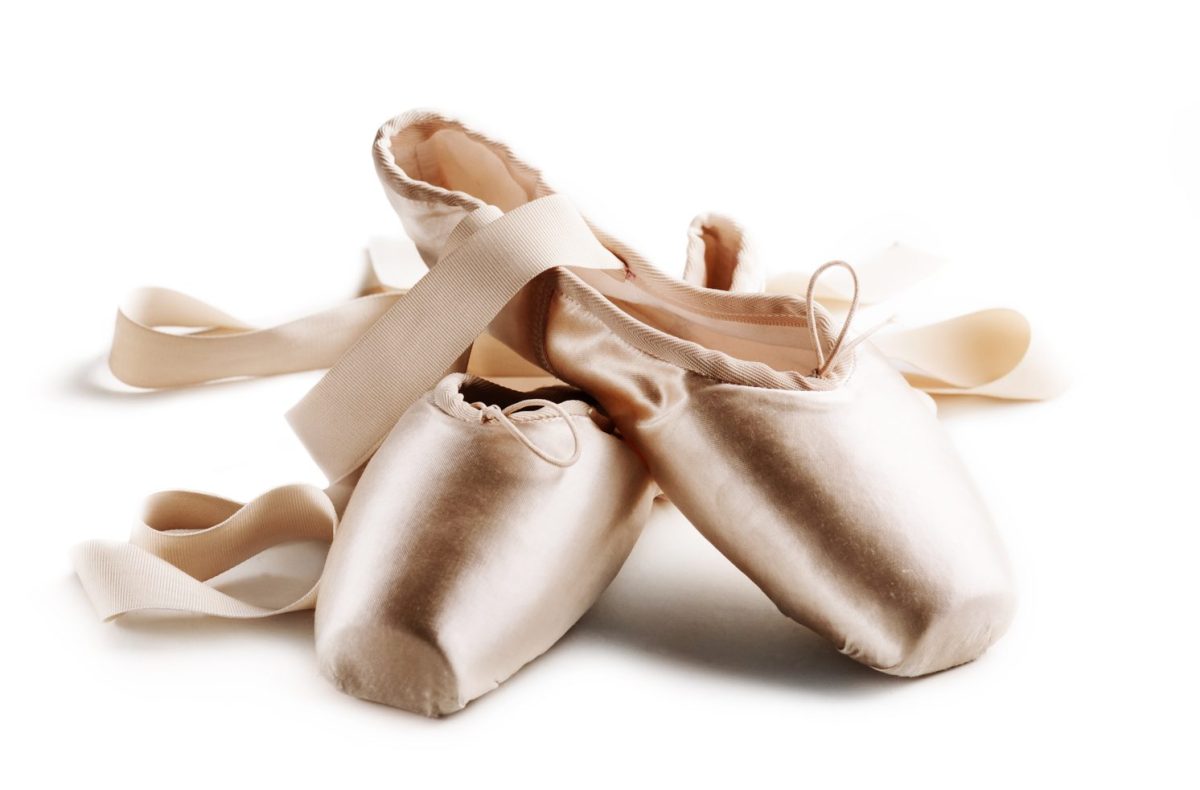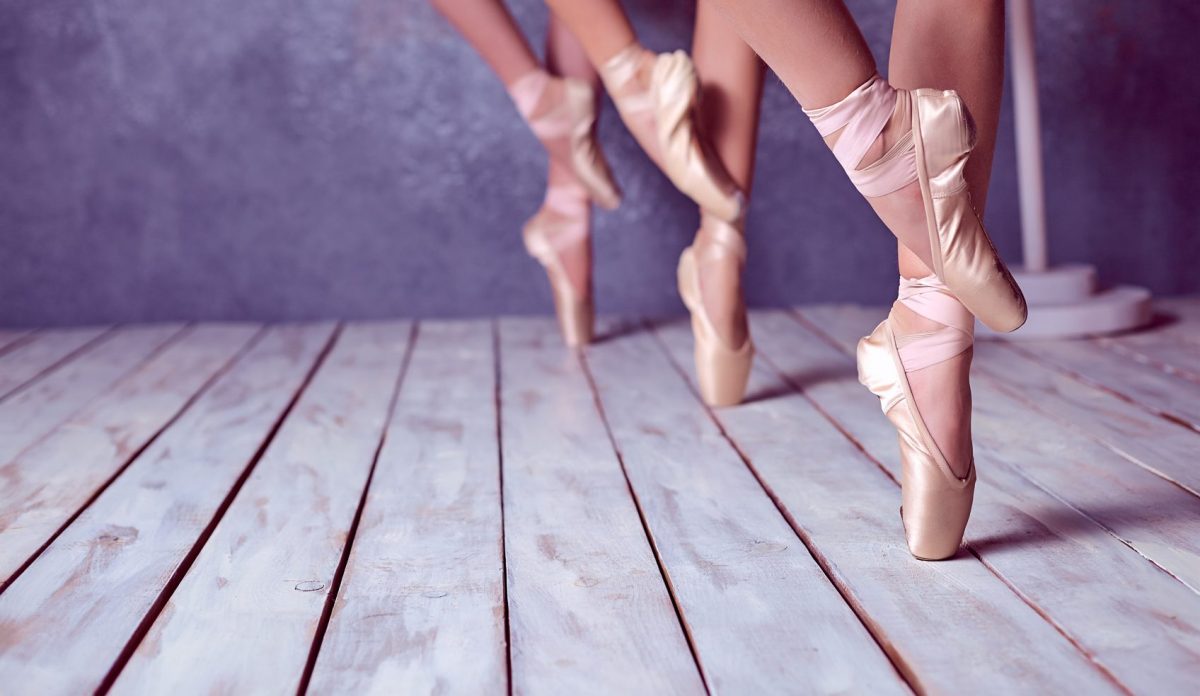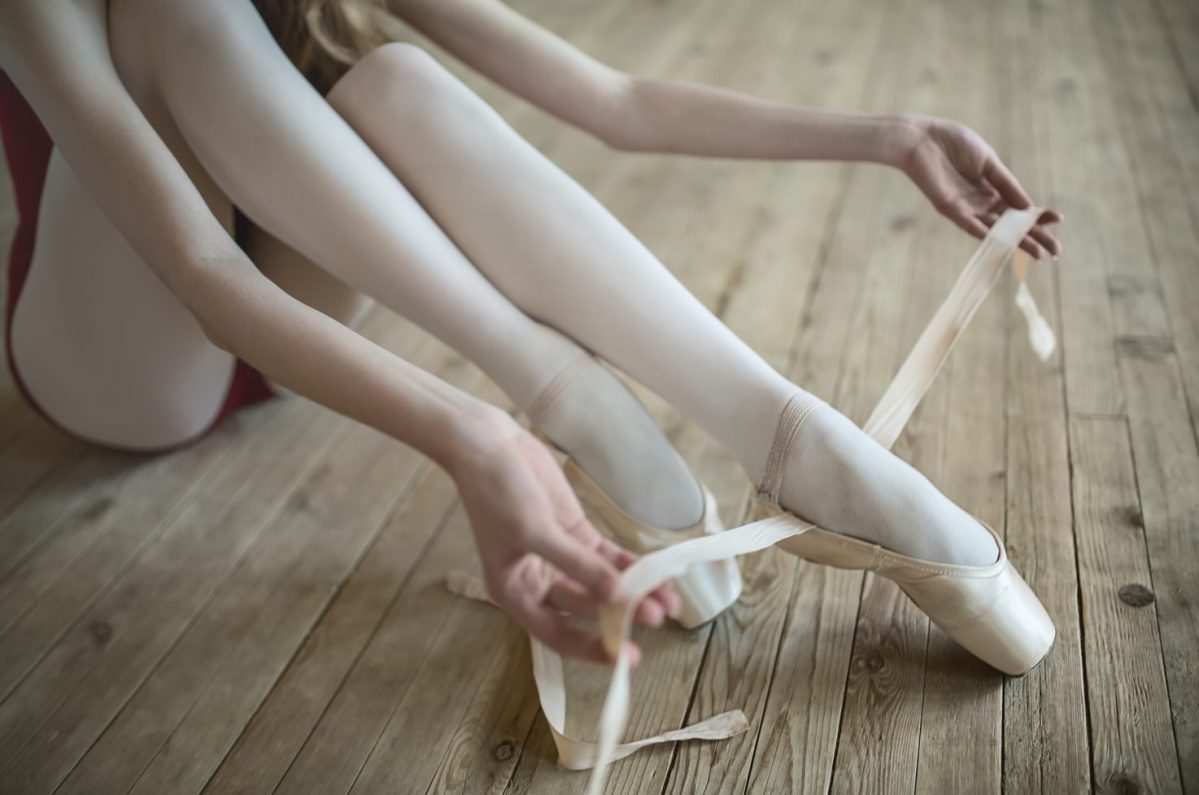The dancer can maintain her balance, pounce, jump, spin, slide, and linger on the tips of her toes while wearing pointe shoes. Before the development of the current reinforced pointe shoe in 1900, ballerinas had to dance in soft slippers. As a result, they could not execute the steps, turns, and prolonged balances on pointe that are expected of dancers today.
Pointe shoes are essential for toe dancing because they enable the dancer to transmit part of her body weight to the shoe in two key areas: beneath the arch and around the toes. This gives the dancer the necessary support for toe dancing.

The length & the width of the foot are the minimum requirements for determining the correct size of pointe shoes. Here is the Pointe Shoe Size Chart to assist you in determining the appropriate length of your pointe shoes. Check if the size of Grishko, Capezio, Russian Pointe, R-Class, and Siberian Swan pointe shoes is comparable to your street shoe size.
Pointe Shoe Size Chart

If you cannot try on a pair of pointe shoes in a ballet shop in your region, we will walk you through the steps to take your measurements at home. Please make sure you adhere strictly to our rules.
To be aware of your dimensions, set a piece of paper on the floor, place one foot on the paper so that it is entirely perpendicular to the paper, and then use a pencil to trace the contour of the foot.
Use a ruler to determine the distance between the heel’s most central point and the front or second toe of the other foot. Determine your size by looking up the relevant number in millimeters in the chart we provided.
When selecting the ideal pointe shoes, more than a search based solely on the length dimension is required. If you have yet to find your size in the table, it most likely indicates that your feet are extremely little or relatively large.
If this is the case, you shouldn’t be concerned since you will get a pair of shoes built specifically for you.
| Brands/ models | Russian Pointe | Capezio
|
Siberian Swan | Grishko
|
R-Class | ||
| Metric system,
mm |
Rubin, Sapfir, Almaz, Brava, Lumina, Muse, Entrada, Entrada PRO, | Con-tem-pora | Tiffany, Aria, Cambré, Airess, Donatella, Developpé, Ava | Pavlova, Karsavina | Fouette, Triumph, Maya I, Maya II | Grishko 2007, 2007 ProFlex, Nova, Miracle, Dream Pointe | Topaz, Bonbe, Anima, Celesta, Dolce, Elegance, Polette, Grande |
| 205 | 32.0 | 2.5 | 4.5 | 2.0 | 1.0 | 1.5 | 32.0 |
| 210 | 33.0 | 3.0 | 5.0 | 2.5 | 1.5 | 2.0 | 33.0 |
| 215 | 34.0 | 3.5 | 5.5 | 3.0 | 2.0 | 2.5 | 34.0 |
| 220 | 34.5 | 4.0 | 6.0 | 3.5 | 2.5 | 3.0 | 34.5 |
| 225 | 35.0 | 4.5 | 6.5 | 4.0 | 3.0 | 3.5 | 35.0 |
| 230 | 36.0 | 5.0 | 7.0 | 4.5 | 3.5 | 4.0 | 36.0 |
| 235 | 37.0 | 5.5 | 7.5 | 5.0 | 4.0 | 4.5 | 37.0 |
| 240 | 37.5 | 6.0 | 8.0 | 5.5 | 4.5 | 5.0 | 37.5 |
| 245 | 38 .0 | 6.5 | 8.5 | 6.0 | 5.0 | 5.5 | 38.0 |
| 250 | 39.0 | 7.0 | 9.0 | 6.5 | 5.5 | 6.0 | 39.0 |
| 255 | 40.0 | 7.5 | 9.5 | 6.5 | 6.0 | 6.5 | 40.0 |
| 260 | 41.0 | 8.0 | 10.0 | 7.0 | 6.5 | 7.0 | 41.0 |
| 265 | 42.0 | 8.5 | 10.5 | 7.5 | 7.0 | 7.5 | 42.0 |
| 270 | 43.0 | 9.0 | 11.0 | 8.0 | 7.5 | 8.0 | 43.0 |
| 275 | 44.0 | 9.5 | 11.5 | 8.5 | 8.0 | 8.5 | 44.0 |
| 280 | 45.0 | 12.5 | 8.5 | 9.0 | 45.0 | ||
| 285 | – | 13.0 | 9.0 | 9.5 | – | ||
| 290 | – | 13.5 | 9.5 | 10.0 | – | ||
| 295 | – | 10.0 | 10.5 | – | |||
How Are Pointe Shoes Made?
There are a few different components that go into making pointe shoes. A detailed explanation of each component is provided below in the following order:
- Satin is typically used for the upper portion of a pointe shoe.
- The toe block of a pointe shoe is a rigid box constructed from many layers of fabric, cardboard, and paper. It is located at the very front of the shoe. These are compacted very closely together and then solidified using pointe shoe pastes.
- Layers of cardboard are used in the construction of the shank.
- A skinny strip of leather is generally used in the construction of the sole of a pointe shoe.
Reasons To Choose The Right Pointe Shoes

- Because of the following reasons, it is essential to select the appropriate pointe shoe:
- It frees you from having to think continually about your shoes, which enables you to become the most excellent dancer you can be.
- Selecting the appropriate pointe shoe will assist in safeguarding the most sensitive portions of your foot, such as your toenails and toes. In addition, it will discourage certain risky behaviors that might result in harm. Attorneys specializing in medical malpractice in Wyoming assist clients in pursuing the just compensation they are entitled to for their injuries.
- It will mold itself very precisely to the shape of your foot, offering support in the shank and the box, and it will assist in complementing the lines of your body.
- If these are the advantages of selecting the appropriate pointe shoe, it stands to reason that wearing the incorrect shoe will result in…
- Discomfort, bruising of the toes, and maybe even bunions.
- Turn the shank counterclockwise.
- Impose an abnormally high amount of extra weight on your toes.
- Stop you from going beyond the box.
- Adopt a shape, such as a pronated stance or a sickle posture.
How To Choose The Right Pointe Shoes?

Finding a pair of pointe shoes that are right might be challenging. But have no fear; we have put together a helpful guide that will assist you in selecting the pointe shoes that are most suited to your feet. Without further ado, let’s examine all the considerations you must make while searching for and selecting the appropriate pair of pointe shoes…
Choose the size
The first stage, which is typically the least difficult, is to determine the appropriate size. It is optional for you to be an expert on this topic because your typical shoe size will give you a very accurate indication. But be careful! There isn’t usually a one-to-one correspondence between the sizes of sneakers and pointe shoes. In addition, you may need to wear foam or silicone toe pads with your pointe shoes. If that’s the case, you’ll want to go up a size from what you normally wear (typically a half size more prominent).
How will you determine whether or not the size is appropriate? It is important to remember that pointe shoes are different from athletic shoes, even though you may have a sense of ease when you first slip them on. Perform the exercises while standing erect and keeping your feet in a parallel position. Three different outcomes might occur:
- Because the shoe is one size too small, the tips of your toes are compressed against the front.
- If you can flex your toes without restriction and the shoe slides off your heel when you lift your foot (it is important to remember that heels may also fall off without connected ribbons or elastics), then the shoe is too large for your foot.
- Your toes are perfectly aligned and flat, touching the front of the shoe, and you are not experiencing any pain or discomfort; this indicates that you have selected the appropriate size.
The shape of the foot
Because each person’s foot is unique, the first step is to analyze your foot to determine its structure.
Greek foot is easily identifiable because of the lengthier second toe compared to the other toes. In general, Greek feet are relatively slender (especially the forefoot). This is only sometimes the case.
Egyptian foot is the most prevalent form of foot, distinguished by toes that are precisely tapered, with the hallux (big toe) being the longest of all the toes.
Roman foot (often known as the square foot) is the most desirable foot form for pointe work; nonetheless, it accounts for just 9% of all feet. The first three toes of a person with Roman feet are all the same length.
The shape & width of the box
Selecting the appropriate box will be much simpler when you have determined the sort of foot you have. For dancers with a larger frontline, square boxes are the best option. In most cases, they are appropriate for use with square Roman or Egyptian feet. It is better to use tapered (or cone-shaped) boxes with smaller feet, such as the cone-shaped feet used in Greek or Egyptian architecture.
Simply standing on your toes and evaluating their feelings is an easy way to test a form. If your big toe is in pain (as if it were bearing all of your weight), the box is too square and will not adequately embrace all of your toes. If, on the other hand, you feel that you need more room for your toes, the box may be too narrow.
The width of the majority of boxes may be described as “narrow,” “medium,” or “broad.” Nevertheless, there are many more choices available from some manufacturers! While you’re “en pointe,” you should be able to hold onto your toes without experiencing any pain, and your feet shouldn’t stretch apart.
Your shoes should contact the tips of your feet. A shoe with sufficient width will keep the ball of the foot in place, preventing the wearer’s whole body weight from being concentrated on the toes.
The shank’s length and hardness
The strengthened soles of pointe shoes, referred to as “shanks,” make it possible for dancers to stand “en pointe.” There is a wide range of possible degrees of brittleness for shanks, from incredibly soft to highly rigid. Consequently, every dancer can track down the footwear ideal for their feet.
Soft shanks are designed for dancers with tight ligaments in their feet’ arch. These dancers gradually build their strength in their ankles and insteps. This does not necessarily mean that all novices will opt for a shoe with a softer shank; instead, their decision will be determined by the strength of their feet.
Here are some things to remember when searching for the ideal shank… When standing “en pointe,” you should be able to feel the shank bend ever-so-slightly to conform to the arch that is formed beneath your foot. If it is too easy to bend, it will be too soft for you to use and will rapidly lose its support. On the other side, if it does not bend in any way, this indicates that it is overly inflexible. Your pointe work, as well as your feet, will suffer as a result.
The vamp’s length
When your foot is bent in a “demi-pointe” posture, the vamp, a component of the shoe, stretches from the top of your toes to that point. The length of the vamp must be adjusted to correspond with the length of your toes.
When you are putting on shoes, use your fingertips to determine the length that is most comfortable for you. Check that the vamp extends up to the end of each of your toes. When the dancer is “en pointe,” it will be simple to determine whether or not the vamp is the appropriate duration.
The vamp is too long if it’s challenging to get “en pointe” immediately or after transitioning from “demi-pointe.” If, on the other hand, you find that the base of the toes is poking out of the shoe, this indicates that the vamp is too short for the shoe. When working on pointe, this can be risky, and from an artistic point of view, it’s also a big no-no.
FAQs
At what ballet level do you begin pointe work?
It is recommended that you attend ballet classes for at least two years and be at least 11 or 12 years old before beginning pointe work. If you start dancing en pointe while you’re too young, your foot bones will still be developing, which makes them more susceptible to injuries that can be permanent.
How do you choose which pointe shoe will best suit your feet?
Your toes should be accessible with a finger inserted inside the pointe shoe. If you cannot, there may not be sufficient area for dancing in them. Verify that the wings are the appropriate length and that the heel is positioned correctly. The wings down the sides of your pointe shoes must be long enough to reach your big toe.
Should I upsize or downsize my pointe shoes?
It is hazardous for dancers to wear pointe shoes that are either overly large or have the capacity for further expansion. For a dancer to perform well while wearing pointe shoes, the shoes need to be custom-made for the dancer’s feet and provide the appropriate amount of support for the dancer’s feet. Any spare room allows the dancer’s foot to shift and move freely within the shoe.
Do you have to wear pointe shoes that match the color of your skin?
No. Peach and pink skin tones and deeper tones for dancers of color are available in various pointe shoe styles. If the costume people need the pointe shoes to be a particular color for a performance, they will dye them to match the required hue.

